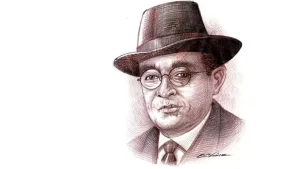The Art with Feathers, Ceramics and Sculpture – The Mayan Civilization
Return to the main article The Maya Civilization
It was a highly appreciated artistic manifestation in which they used primarily quetzal feathers for the creation of headdresses and other adornments. The headdresses varied in shape and size depending on the position they held.
Ceramics
Maya ceramics were rich and varied, ranging from cups and plates to objects for religious rituals. Most of the objects were painted with geometric motifs, although they also depicted animals and geometric figures.
The ceramics had thin walls, symmetrical forms, limestone-based pigments with polished surfaces, a wide range of colors, and excellent watercolor finishes.
The pieces were fired at temperatures of up to 800 degrees in open kilns. The decorations included Mayan hieroglyphic texts with scenes of nobles, military episodes, images of rulers, supernatural beings, and more. This suggests that they were made by noble artisans and signed by them to solidify alliances and as burial offerings.
Sculpture
For various sculptural works, including bas-reliefs, high reliefs, and stelae, they used wood, stucco, and limestone, occasionally covered with painted stucco made from powdered limestone, shells, and vegetable binders in various colors.
Most Common Examples in Sculpture
Eagle: sacred animal. It is often depicted with a heart in its claw as a reference to human sacrifice.
Chaac: (god of rain), usually represented with a long trunk, eyes, earrings, and an open mouth with sharp teeth.
Chac Mool: (religious symbol), believed to have been a place for offerings (human or otherwise) or a throne. It takes the form of a reclining man with folded legs (typical abdominal exercise position) and hands holding a dish on the stomach. These statues may represent war prisoners.
Crosses: symbolize the four directions or angles of the world plus the center, and also represent the maize plant.
Descending God Ah Muken Kaab: (a deity frequently seen in Tulum). Its name is explained by its upside-down posture, with feet up, arms and head down, and a tail resembling a wasp.
Stelae: vertical stone or wooden slabs that contain designs, inscriptions, and calendrical information to commemorate significant events.
Phalluses: represent a fertility cult. They are mainly found in Uxmal. Their position suggests that the seed enters the earth and fertilizes it.
Flowers: symbolize fertility and sexuality.
Greca: symbol representing wind, clouds, rain, etc.
Feathered Serpent Man: another representation of the god Kukulkan.
Bearded Man: sometimes a possible representation of Kukulkan. More modern interpretations suggest that it represents the war serpent Waxak Lahun Uva Kan.
Jaguars: the sacred animal representing the Sun in its journey through the underworld, possibly used as a throne.
Kukulkan: (with various attributes in his worship). Depicted as a feathered rattlesnake.
Planet Venus: related to the duality in Maya religion and many other aspects, including war.
Standard Bearers: statues of human figures holding flags that fit into their hands.
Rattlesnakes: have symbolic attributes. When they emerge from a body, they symbolize blood and fertility, and when they emerge from vessels, they represent water.
Return to the main article The Maya Civilization



